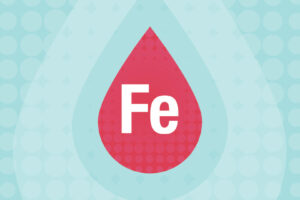Heightened focus on soaring cholesterol levels and the associated risks for heart disease has led to many new advances in medicines and therapies which are emerging at a rapid pace. In the past few years, we have also seen a shift in the treatment and prevention of heart disease and cholesterol disorders.
New drugs, progressive assessments and fresh perspectives are providing promise that hasn’t been seen in a long time. Heart disease remains the number one cause of death in the United States – and one of the most important risk factors for developing coronary heart disease is an elevated level of “bad” cholesterol. Additionally, blood sugar problems, which are exploding in prevalence, have a direct effect on heart disease. To put things in perspective, in New Jersey alone, about 10 percent of the population is diabetic and another 15 percent are pre-diabetic and heading down a dangerous path.
The large number of patients who have both cholesterol and blood sugar problems necessitates testing and treatment that address the connection between these issues when it comes to heart disease. As a result, more sufficient measures are being introduced.
Advanced lipid profiles tell the real story about your cholesterol
First, there’s a growing recognition that the basic lipid profile performed when assessing cholesterol doesn’t tell a complete enough story to be a predictive model of impending heart disease. Standard cholesterol measurement reveals your total cholesterol level broken down by LDL (bad cholesterol), HDL (good cholesterol) and triglycerides.
For every one percent increase in LDL, there’s a one percent increase in the likelihood of developing heart disease, over a 10-year course. For every one percent decrease in HDL, there’s a two percent increase in your chances of developing heart disease over the same time span. However, research shows that therapeutic methods that treat LDL or HDL targets don’t adequately address cardiovascular problems.
While we do need to measure LDL levels, more importantly, we also need to take a next-level-down approach and assess LDL particles – a different measure than blood LDL levels. When it comes to assessing cholesterol levels, LDL particles carry varying amounts of cholesterol within each particle. It’s like the difference between looking at a grapefruit versus a marble. This is an important distinction that’s finally gotten attention. From this more accurate breakdown of LDL and HDL into concentrations and particles, we can now better predict outcomes and treat heart disease with more defined medications and modalities.
Recently, I treated a 54-year-old woman whose father passed away after a heart attack at age 52. She felt destined to have a heart attack at any moment. Her LDL and HDL levels were normal, yet, when a nuclear stress test was done because of chest pain, it showed multiple abnormalities. She had a cardiac catheterization which showed low-level, multi-vessel disease. Soon after, advanced lipid testing showed an LDL particle number of 2144, which was more than twice the norm. She was then treated with a combination of extended release niacin, omega 3 ethyl esters and a very low carbohydrate diet. A repeat stress test two years later was normal. The thought was that if the LDL particle abnormality had been assessed and treated up front, she might have avoided a cardiac catheterization and the accumulation of atherosclerosis.
Carbs – an overlooked contributor that’s finally come under focus
The second shift I’d point to has been a more concerted focus on carbohydrates as a predictor of cholesterol disorders and heart disease. I harp on patients with cholesterol problems that it’s not so much their fat intake that matters, it’s the fat consumed in combination with carbohydrates. Today, we are finally seeing more clearly the adverse effect of carbs on one’s lipid profile.
Typically, people don’t realize that sugar and other carbohydrate consumption contributes to cholesterol problems. Americans consume an average of 22 teaspoons of sugar a day and even more from carbohydrates (which the body breaks down into sugar) from pasta, rice, bread, corn and potatoes.
An increased LDL level, which is linked in part to saturated fat intake, is only one type of cholesterol problem. Eating sugar and other carbohydrates also raises triglycerides, lowers HDL, and causes dysfunctional alterations in LDL molecules. The overconsumption of carbohydrates, and the insulin resistance that results from this, is the direct cause of LDL particle problems. While LDL levels may seem normal, this dysfunctional LDL can cause rapid clogging of arteries and increased risk for thrombosis.
A new family of medications – another choice besides statins
The final significant change is the availability of many new medications to treat high cholesterol. For the past 25 years, statins have been viewed as the best available drugs for reducing cholesterol. Indeed, hundreds of thousands of patients have lowered their heart disease risk in proven cardiovascular disease studies studying statins. But there is frustration because statins have side effects and people are looking for other forms of treatment. Walk into many retailers and you can find numerous “over the counter” treatments for cholesterol – most of which are untested and unregulated, and have absolutely no effect on a person’s cholesterol levels.
While they do lower cholesterol, there is a limitation to how much statins can lower your heart disease risk, even when getting your cholesterol to seemingly normal levels. That’s a key, often unnoticed, factor. Additionally, statins can cause such side effects as muscle aches, liver toxicity and anecdotal cognitive troubles. Some patients with severe cholesterol problems simply cannot tolerate statins or take large enough dosages. For them, the only option had been other medications whose outcomes have not been as firmly established as statins or a form of dialysis that removes cholesterol from the bloodstream. In some cases, LDL is high due to an underlying genetic cause and, in these situations, even the most powerful statins can’t make a full impact.
We now have a new class of drugs that interfere with the processing of cholesterol, by blocking a protein that breaks down LDL receptors that pull cholesterol out of the bloodstream. These new medications seem to have a greater efficacy than statins for LDL reduction, and are effective in reducing cardiovascular disease when added to statin therapy.
Going forward, will these medications be an alternative or an add-on to statins? It’s too early to tell. Today, there are two of these medications available and more are being tested in clinical trials.
Definitely not a one-size-fits-all approach
Since cholesterol problems are a modifiable risk factor for heart disease, many people tend to believe in a one-size-fits-all approach – thinking that a low fat diet and, perhaps, a statin will fix everything. I work with people on an individual basis to help them lower cholesterol based upon their unique lifestyle and personal health care needs. This is extremely important because “one size does not fit all” when it comes to managing cholesterol. Every patient’s blood work, medical history, age and overall health determines the best treatments for lowering cardiovascular disease.
 Spencer Kroll, MD, PhD, FNLA is a board-certified and fellowship-trained physician specializing in internal medicine. He is also a board-certified lipidologist and a fellow of the National Lipid Association. For more information, call 866-CENTRA7 (866-236-8727).
Spencer Kroll, MD, PhD, FNLA is a board-certified and fellowship-trained physician specializing in internal medicine. He is also a board-certified lipidologist and a fellow of the National Lipid Association. For more information, call 866-CENTRA7 (866-236-8727).





